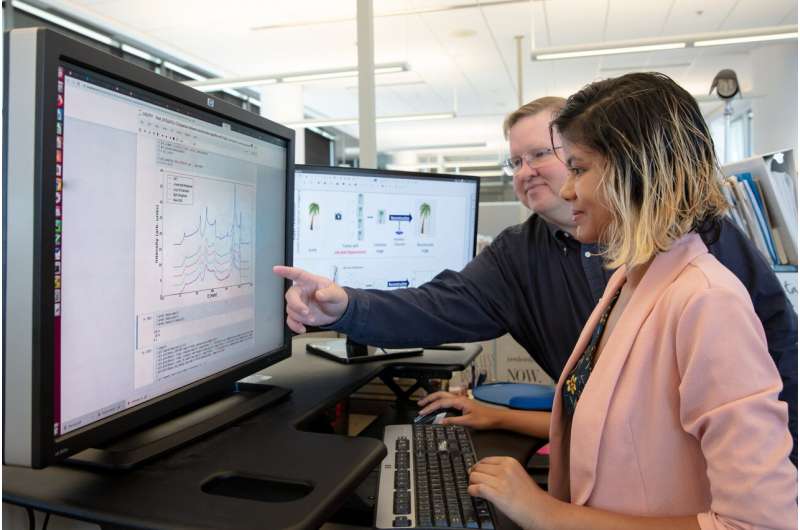New ORNL software improves neutron spectroscopy data resolution

Neutron spectroscopy is an important tool for studying magnetic and thermoelectric properties in materials. But often the resolution, or the ability of the instrument to see fine details, is too coarse to clearly observe features identifying novel phenomena in new advanced materials.
To solve this problem, Fahima Islam, Jiao Lin, and Garrett Granroth, researchers with the Neutron Sciences Directorate (NScD) at the Department of Energy's (DOE's) Oak Ridge National Laboratory (ORNL), developed a new super-resolution software, called SRINS, that makes it easier for scientists to better understand materials' dynamical properties using neutron spectroscopy. By combing neutron data from multiple detectors through a special algorithm, the software uses multiple measurements of the same material property from different perspectives to provide researchers with results that have up to five times finer resolution than those produced through traditional spectroscopy data reduction techniques.
"With this software, we can improve the resolution of neutron scattering data measured in a direct-geometry spectrometer by a factor of five without installing any new hardware. This innovation can lead to more developments leveraging imaging processing research in neutron data science for the global neutron scattering community," said Lin.
Neutron spectroscopy is a neutron scattering technique used to detect and measure energy signatures arising from the internal dynamics of the material. Those signatures give scientists unique insight into how materials behave, especially those with thermoelectric and magnetic properties. Scientists can then use this information to generate new, advanced materials for future applications.
"The study of such energy signatures is fundamental research, but it's fundamental research with a purpose. The data we collect with neutron spectroscopy could make meaningful contributions to things like quantum computers and next-generation cooling systems," said Granroth.
To make it easier for researchers to lay the groundwork for future scientific achievements, Islam, Lin, and Granroth worked alongside colleagues at ORNL's Computational and Applied Mathematics Group (CAM) to create an algorithm that greatly improves the resolution of data produced with neutron spectroscopy. Then, using the programming language Python, they codified their algorithm into software that scientists around the world can install on their neutron spectroscopy instruments.
"It's just a prototype, but we've had remarkable success so far. For comparison, improving data resolution this much by installing new equipment would have required much larger instrumentation that is unfeasible to build. With this software, we're able to conserve resources and still make drastic improvements to our neutron spectroscopy capabilities. And it has the potential to improve the resolution of many neutron scattering measurements, not just spectroscopy," said Fahima.
"Oak Ridge is unique in the fact that we have multiple world-leading facilities right next door to each other. Having the opportunity to work with my colleagues on groundbreaking science like this software was really exciting," said Richard Archibald, an applied mathematician with CAM who helped Islam, Lin, and Granroth develop the software.
Islam, Lin, and Granroth hope that their new software will not only lead to new developments in advanced materials research at Oak Ridge, but also have a big impact on the field of neutron scattering in general.
"As far as we know, this is the first published work showing an application of super resolution to neutrons. We're at the forefront of an exciting new trend that will help other neutron scattering facilities improve their own data resolution as well," said Lin.
Provided by Oak Ridge National Laboratory




















